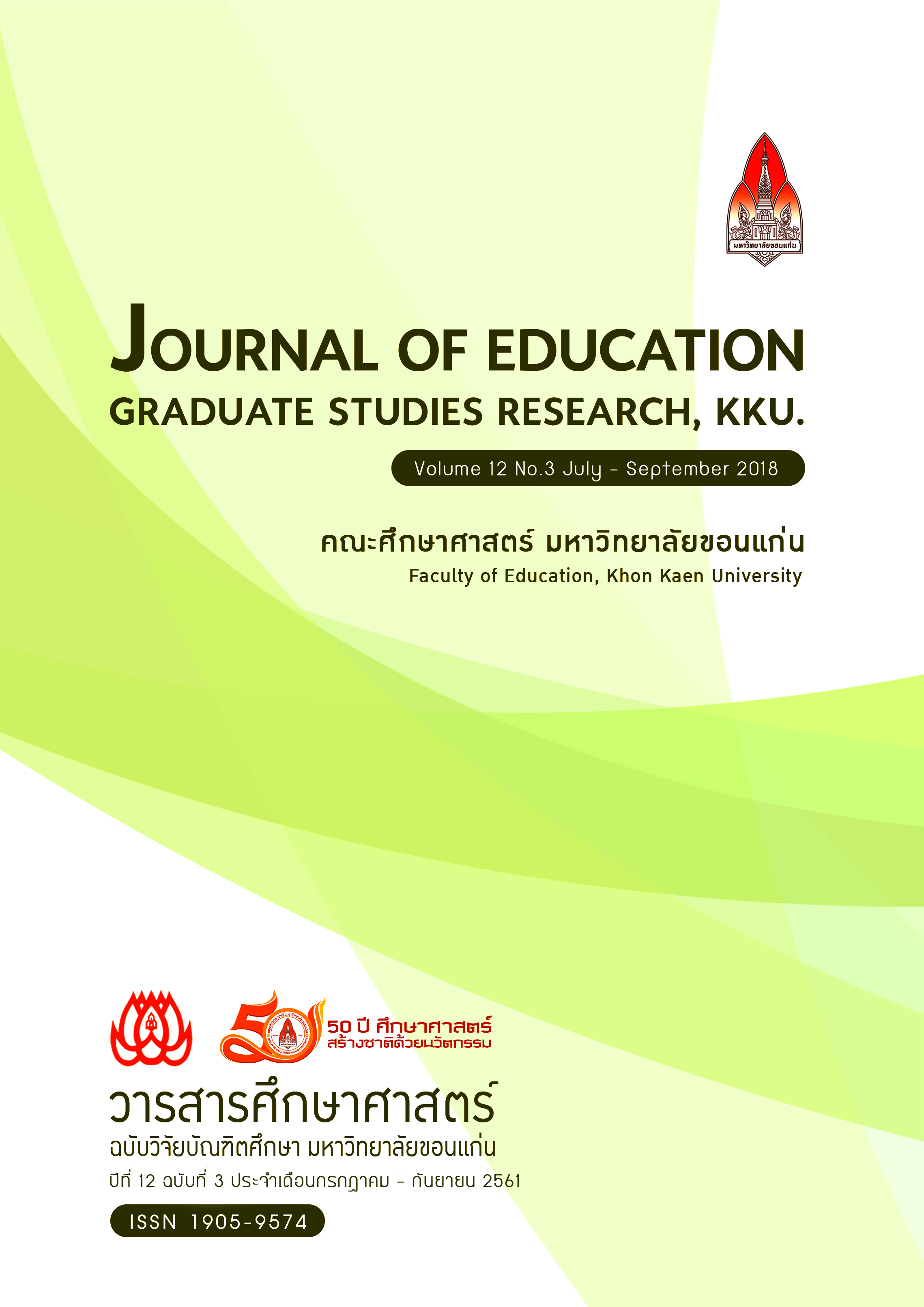The Development of Visual Art Curriculum by Using Career Integrated Learning and Flipped Classroom Technique for Enhancing 21st Century Career and Learning Skills of Grade 12 Students
Main Article Content
Abstract
The objectives of this research were 1) to develop the Visual Art curriculum by using career intergraded learning and flipped classroom technique for enhancing 21st century career and learning skills of grade 12 students 2) to study the results of the development of Visual Art curriculum by using career integrated learning and flipped classroom technique for enhancing 21st century career and learning skills of grade 12 students by expecting at least 70 percent of the students to pass the criteria of 70 percent. 3) to study Grade 12 students’ satisfaction in visual art curriculum by using career integrated learning and flipped classroom technique. This research was an Action Research. The target group consisted of 15 Grade 12 students Chumpaewithayayon School, during the second semester of 2016 school year. The instruments using in this study were the Learning Management Plan for 10 Plans, the Career and Learning Skills Test and the Questionnaire of Students’ Satisfaction.
The research results found:
- 1. The research of the concordance assessment of the Learning Management Plan for 10 Plans on average 4.74 as 94.84 percent, higher than a predetermined threshold.
- 2. The research findings found that the Learning Achievement on average 75.63 percent, the Career and Learning skills Assessment on average 77.29 percent, higher than a predetermined threshold.
- 3. The Satisfaction of the students in visual art curriculum by using career integrated learning and flipped classroom technique on average 4.33, higher than a predetermined threshold.
Article Details
References
ทิชานนท์ ชุมแวงวาปี. (2558). การพัฒนาผลสัมฤทธิ์ทางการเรียนและทักษะการแก้ปัญหาด้วยวิธีการเรียนรู้โดยใช้ปัญหาเป็น ฐานร่วมกับเทคนิคห้องเรียนกลับด้านของนักเรียนชั้นมัธยมศึกษาปีที่ 1 ในรายวิชาสังคมศึกษา ส 21103. วารสารศึกษาศาสตร์ มหาวิทยาลัยขอนแก่น, 38(4), 7-14.
พิมพันธ์ เดชะคุปต์. (2555). คู่มือปฏิบัติการเพื่อพัฒนาผลการเรียนรู้สู่ห้องเรียนแห่งคุณภาพ.กรุงเทพฯ: จุฬาลงกรณ์มหาวิทยาลัย.
รัตนศรี พรหมใจรักษ์. (2555). การพัฒนาทักษะพื้นฐานที่จำเป็นต่อการประกอบอาชีพ โดยใช้กิจกรรมค่ายการงานอาชีพและเทคโนโลยี. รายงานการศึกษาอิสระปริญญาศึกษาศาสตรมหาบัณฑิต สาขาวิชาหลักสูตรและการสอน บัณฑิตวิทยาลัย มหาวิทยาลัยขอนแก่น.
วันเฉลิม อุดมศรี. (2556). การพัฒนาความสามารถการคิดเชิงบูรณาการ และผลสัมฤทธิ์ทางการเรียนของนักเรียนชั้นมัธยมศึกษาปีที่ 3 หน่วยการเรียนรู้ที่ 1 และ 2 ภูมิศาสตร์ทวีปอเมริกาเหนือและใต้ โดยใช้รูปแบบการเรียนรู้แบบใช้ปัญหาเป็นฐาน (Problem-Based Learning) ร่วมกับเทคนิคห้องเรียนกลับทาง. วิทยานิพนธ์ปริญญาศึกษาศาสตรมหาบัณฑิต สาขาวิชาหลักสูตรและการสอน บัณฑิตวิทยาลัย มหาวิทยาลัยขอนแก่น.
Jeremy, F. S. (2007). The Effect of the Classroom Flip on the Learning Environment: A Comparison of Learning Activity a Traditional Classroom and a Flip Classroom that used an Intelligent Tutoring System. Ph.D. Dissertation, Graduate School, Ohio State University.

